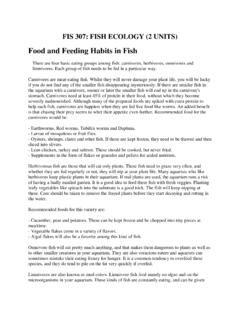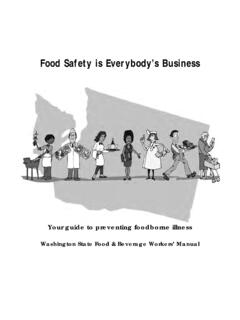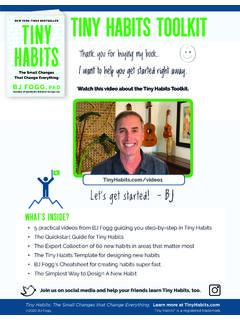Transcription of 9 The Living Organisms and Their Surroundings P - NCERT
1 9 The Living Organisms and Their Surroundings P. aheli and Boojho went on of some kind or the other (Fig. ). Paheli vacation to many places of started thinking and reading about far d interest. One such trip took away places. She read that people have them to the river Ganga in Rishikesh. even found tiny Living Organisms in the e They climbed the mountains of the openings of volcanoes! h Himalayas, where it was very cold. They s saw many kinds of trees on these T i mountains oaks, pines and deodars, l very different from the ones near Their R b home on the plains! In yet another trip, E. they travelled to Rajasthan and moved u on camels through the hot desert. They C p collected different kinds of cactus plants from this trip. Finally, they went on a N e trip to Puri and visited the sea beach, r Fig.
2 Search for Living Organisms e dotted with casuarina trees. While recollecting all the fun that they had on Organisms AND THE. these trips, a thought struck them. All Surroundings WHERE THEY LIVE. b these places were so different from one Another thought that occurred to Paheli another, some were cold, some very hot and Boojho was about the kinds of Living o and dry, and some places so humid. And Organisms that were present in different t yet all of them had many Organisms locations that they had visited. The ( Living creatures) of various kinds. deserts had camels, the mountains had t They tried to think of a place on Earth goats and yak. Puri had some other o where there may not be any Living creatures crabs on the beach and creatures. Boojho thought of places near such a variety of fish being caught by n his home.
3 Inside the house, he tried the the fishermen at the sea! And then, cupboards. He had thought that there there did seem to be some creatures like may not be any Living Organisms here, ants that were present in all these but he found one tiny spider in the different locations. The kinds of plants cupboard. Outside the home too, there found in each of these regions were so did not seem to be any place, he could different from the plants of the other think of, that did not have Living creatures regions. What about the Surroundings in these different regions? Were they will discuss the table as we travel the same? through many more interesting places. Activity 1 HABITAT AND ADAPTATION. Let us start with a forest. Think of all What do you find from the plants and the plants, animals and objects that can animals listed in Activity 1?
4 Did you find be found there. List them in Column 1 a large variety in them? Look at what you of Table List things, animals and have entered in the column for the desert d plants, found in the other regions that and the column for the sea in Table e are also shown in the table. You can Did you list very different kind of collect the examples scattered through Organisms in these two columns? h this chapter to fill Table Discuss What are the Surroundings like, in s these two regions? T. also with your friends, parents and i teachers, to find more examples to fill In the sea, plants and animals are R l the tables. You can also consult many surrounded by saline (salty) water. Most b interesting books in libraries that talk of them use the air dissolved in water. E. of animals, plants and minerals of There is very little water available in u different regions.
5 The desert. It is very hot in the day time C p T ry and include many plants, and very cold at night in the desert. The N e animals and objects, big and small, in animals and plants of the desert live on r each of the columns in this table. What the desert soil and breathe air from the e kind of objects will we find that may not Surroundings . be animals or plants? Perhaps parts of The sea and the desert are very plants like dried leaves, or parts of different Surroundings and we find very b animals, like bones. We may also find different kind of plants and animals in different kinds of soils and pebbles. these two regions, isn't it? Let us look o Water in the oceans may have salts at two very different kinds of Organisms t dissolved in it as discussed in Chapter from the desert and the sea a camel t 5.
6 There could be many more objects. and a fish. The body structure of a camel As we go through the chapter, keep helps it to survive in desert conditions. o adding more examples to Table We Camels have long legs which help to n Table Animals, plants and other objects found in different Surroundings In the forest On mountains In the desert In the sea Any other? 80 SCIENCE. keep Their bodies away from the heat of We have taken only two examples the sand (Fig. ). They excrete small from a very wide variety of animals and amount of urine, Their dung is dry and plants that live on the Earth. In all this they do not sweat. Since camels lose variety of Organisms , we will find that very little water from Their bodies, they they have certain features that help can live for many days without water.
7 Them live in the Surroundings in which Let us look at different kinds of fish. they are normally found. The presence Some of these are shown in Fig. of specific features or certain habits , d There are so many kinds of fish, but, do which enable a plant or an animal to e you see that they all have something live in its Surroundings , is called common about Their shape? All the ones adaptation. Different animals are h shown here have the streamlined shape adapted to Their Surroundings in T s that was discussed in Chapter 8. This different ways. li shape helps them move inside water. The Surroundings where Organisms R. Fish have slippery scales on Their bodies. live is called a habitat. The Organisms b These scales protect the fish and also depend for Their food, water, air, shelter E u help in easy movement through water.
8 And other needs on Their habitat. C. We discussed in Chapter 8, that fish Habitat means a dwelling place (a p have flat fins and tails that help them home). Several kinds of plants and N e to change directions and keep Their body animals may share the same habitat. r balance in water. Gills present in the The plants and animals that live on e fish help them to use oxygen dissolved land are said to live in terrestrial in water. habitats. Some examples of terrestrial b We see that the features of a fish help habitats are forests, grasslands, deserts, it to live inside water and the features of coastal and mountain regions. On the a camel help it to survive in a desert. other hand, the habitats of plants and t o o t n Fig. Camels in Their Surroundings Fig. Different kinds of fish THE Living Organisms AND Their Surroundings 81.
9 There are some changes that can happen in an organism over a short period of time to help them adjust to some changes in Their Surroundings . For instance, if we live in the plains and suddenly go to high mountain regions, we may experience difficulty in breathing and doing physical exercise for some days. We need to breathe faster when we are on high mountains. After some days, our body adjusts to the changed conditions on the high mountain. Such small changes that take place in the body of a single organism over short periods, to overcome small problems due to changes in the Surroundings , are d called acclimatisation. These changes are different from the adaptations that e take place over thousands of years. h animals that live in water are called Collect some dry moong seeds.
10 Keep s aquatic habitats. Ponds, swamps, T. a small heap of seeds aside and soak i lakes, rivers and oceans are some the rest in water for a day. Divide the R l examples of aquatic habitats. There are soaked seeds into four parts. Keep one b large variations in forests, grasslands, part completely submerged in water for E. deserts, coastal and mountain regions 3-4 days. Do not disturb the dry seeds u located in different parts of the world. and those submerged in water. Keep one C p This is true for all aquatic habitats part of soaked seeds in a sunny room N e as well. and another in a completely dark r The Living things such as plants region like a cupboard that does not e and animals, in a habitat, are its biotic allow any light to come in. Keep the last components. Various non- Living things part in very cold Surroundings , say, in such as rocks, soil, air and water in a refrigerator or with ice around them.


















